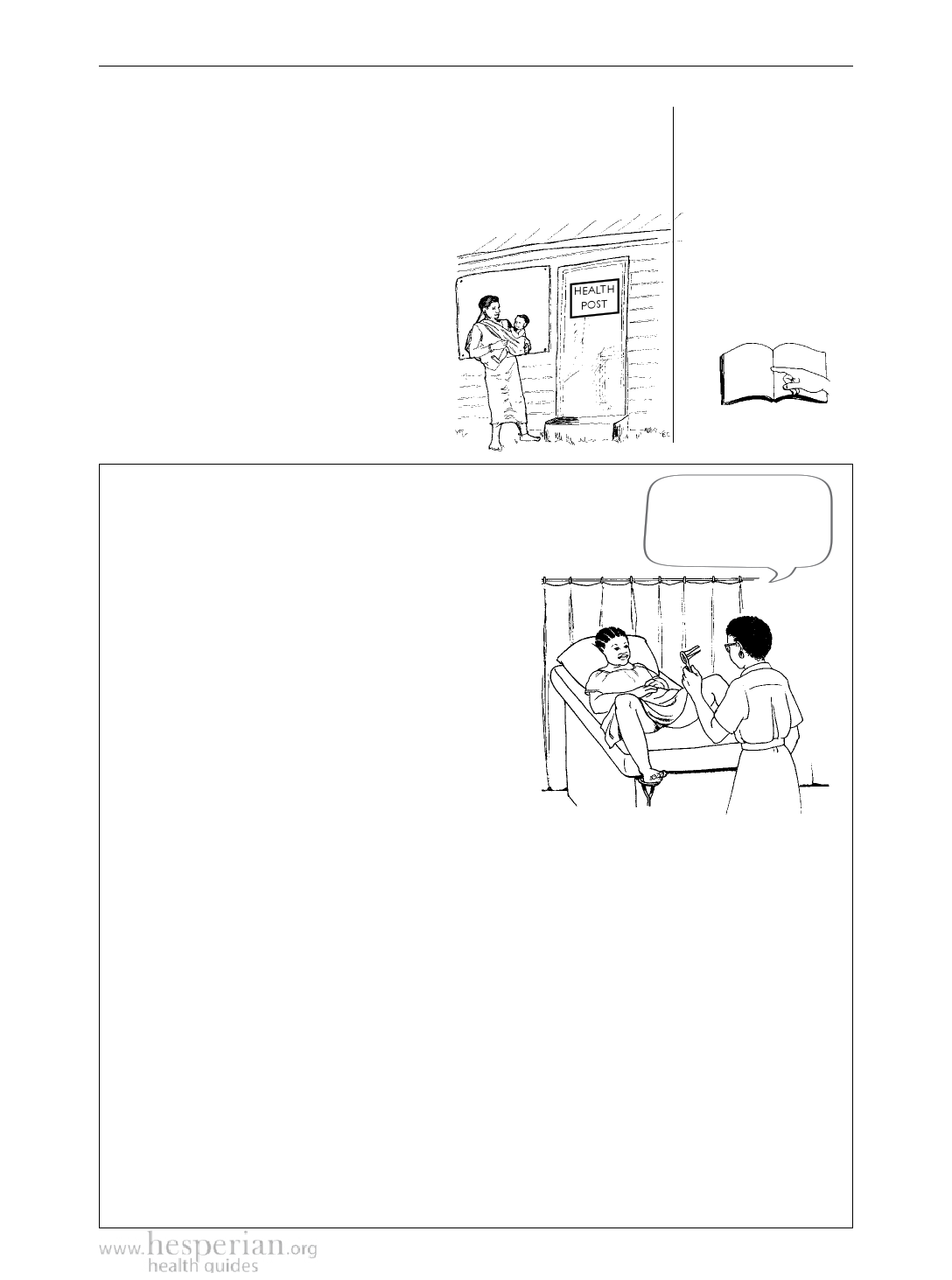
Special Needs of Women 159
Regular health exams
If possible, a woman should see a trained health worker to
check her reproductive system (see page 44) every 3 to 5 years,
even if she feels fine. This exam should include a pelvic exam,
a breast exam, a test for weak blood
(anemia), and an exam for sexually
transmitted infections (STIs) if she is
at risk (see page 263). It may also
include a Pap test (explained below) or
HEALTH
POST
other test for cervical cancer. This is
especially important for women over
35, because women are more likely to
get cancer of the cervix (the opening
of the womb) as they get older.
➤ Many STIs and
cancers do not show
signs until the illness
is very serious. By
then it may be too
late to treat the
problem.
263
women who are at
risk for STIs
These are the steps in the pelvic exam:
1. The health worker will look at your outer genitals for
any swelling, bumps, sores, or changes in color.
2. Usually, the health worker will put a
speculum into your vagina. A speculum
is a small metal or plastic tool that holds
the inside of the vagina open. He or she
can then examine the walls of the vagina
and the cervix for swelling, bumps, sores,
or discharge. You may feel slight pressure
or discomfort with the speculum inside,
but it should not hurt. The exam is more
comfortable if your muscles are relaxed
and your bladder is empty.
I am going to use
this speculum to
look inside your
vagina now.
3. If the clinic has laboratory services, the health worker will do tests for STIs, if
necessary. The health worker may also do a test to look for early changes on
the opening of the womb (cervix) that could become cancer. This could be a
Pap test, visual inspection of the cervix, or a new test to look for HPV, the virus
that causes cervical cancer. These tests are not painful and are done with the
speculum in place. If cancer is found and treated early, it can almost always be
cured (see page 377).
4. After the health worker removes the speculum, she will put on a clean plastic
glove and put two fingers of one hand into your vagina. She will press her
other hand on your lower belly. In this way she can feel the size, shape, and
location of your womb, tubes, and ovaries. This part of the exam should not be
painful. If it is, tell her. It may mean something is wrong.
5. For some problems, the health worker may need to do a rectal exam. One
finger is put into your rectum and one finger into your vagina. This can give the
health worker more information about possible problems of the vagina, and of
the womb, tubes, and ovaries.
Where Women Have No Doctor 2012